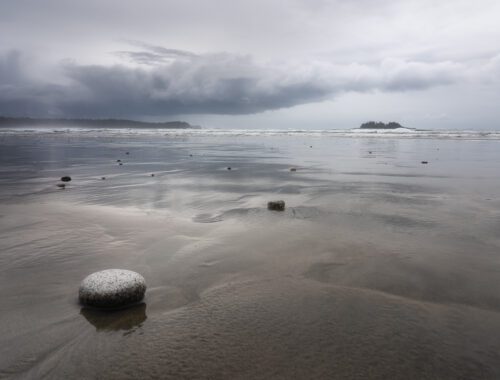
Striking a Balance: Planning Your Landscape Photography Adventure

Photography, and specifically landscape photography, is an art that demands the perfect blend of meticulous planning and spontaneous creativity. Depending on your personality, you may find the planning process a thrilling adventure or a daunting task. Some photographers set a detailed plan (even a backup one) for each day. In contrast, others follow a more relaxed approach, immersing themselves in their environment. Both approaches reflect different personality types and neither is intrinsically right or wrong. Drawing from my personal experiences, I’ve come to realize that striking a balance between these two extremes is key to effective landscape photography.
My Experience with Over-planning and its Shortcomings
I confess: I am a control freak by nature. In the past, I would chart out intricate plans for each day of my trip, detailing everything from location choices to gear selection. However, I soon discovered that this rigid approach was not compatible with the fluidity and unpredictability of landscape photography, especially when exploring new locales. The relentless pursuit of a pre-planned creative path led to mounting frustration and ultimately, dissatisfaction with my work.
From Over-planning to No Planning
Determined to break free from this cycle, I decided to take a drastically different approach during a trip to Canada’s west coast. This time, I threw all planning to the wind, excluding securing accommodations for the night. My only rule was to spend 8 hours outside every day, taking pictures whenever the urge struck me. I decided my daily itinerary on the fly, choosing whether to stay or move on to the next destination.
Despite the high hopes I had for this approach, the results were less than satisfactory. Out of a 45-day trip, I only managed to capture seven worthy images. In retrospect, I realized that this unplanned approach was too far removed from my natural tendencies.
Striking a Balance: A Blend of Planning and Spontaneity
Having experienced both extremes, I decided to find a middle ground. The approach I have now fine-tuned incorporates a reasonable degree of planning without stifling spontaneity:
- Research: When planning a trip to a new location, I begin by gaining a general overview of the area through internet research. I look at snapshots taken by tourists to get a feel for the location. Google Maps’ street view can also be useful. This step helps me decide which lenses and accessories to pack.
- Weather Forecast: I then check the weather forecast for the location. This information guides my choice of clothing and gear. For coastal areas, tidal graphs are also helpful.
- Access and Accommodation: Finally, I assess the accessibility of the location, considering factors such as roads and trails. This step helps me select suitable accommodation and estimate the amount of hiking or walking involved, which subsequently informs the weight of my backpack.
After planning these details, I prioritize two simple rules for my time on the field:
- Daily Exploration: I set out with my gear every day, regardless of the weather or my motivation level. The primary objective is to explore.
- No Self-Criticism: I avoid self-blame if I do not utilize most of the gear in my backpack or do not capture good pictures on a particular day. The goal is to accept the unpredictable nature of landscape photography without feeling discouraged.
Embrace the Journey, Not Just the Outcome
The essence of landscape photography lies in exploration and engagement with nature. The beauty of this genre is that it doesn’t adhere to any predefined expectations. The landscape doesn’t change its demeanor just because a renowned photographer is capturing it – it remains indifferent. It’s us, the photographers, who need to adjust our expectations and find joy in the process.
By understanding and accepting this
reality, you absolve yourself from the burden of self-blame when things don’t go as planned. Remember, your worth as a photographer is not defined by the success of each photoshoot, but by your overall creativity and ability to connect with nature. So, refrain from being too hard on yourself.
Bear in mind that changing your workflow and behaviors won’t yield instant results. If you’re accustomed to extensive planning and pre-visualization, adapting to this balanced approach may initially lead to frustration. However, with patience and perseverance, you will notice a profound transformation in your photographs and the way you create them.
Frequently Asked Questions
Q: How much planning is needed for a landscape photography trip?
A: A balance between meticulous planning and spontaneous creativity is key. Some basic planning, like researching the area, checking weather forecasts, and assessing location access and accommodation, is advised. However, leave room for spontaneity and unplanned exploration.
Q: How should I respond if my planned shots don’t turn out as expected?
A: Refrain from blaming yourself. Landscape photography is unpredictable, and your worth as a photographer is not defined by the success of each photoshoot. Learn to find joy in the process and adapt to the unpredictability of nature.
Conclusion
Planning a landscape photography trip can be both an exciting adventure and a challenging task. Striking the right balance between planning and spontaneity can significantly enhance your photographic journey. Remember to do your groundwork by researching the location, weather, and accessibility, but once you’re on the field, allow yourself the freedom to explore, adapt, and embrace the unpredictability of nature. Above all, avoid self-criticism and remember that the true beauty of landscape photography lies in the journey, not just the outcome.




